Any image created for use on a public-facing website or collateral requires subjects to sign a media release.
Casting and Wardrobe
- Casting the right talent and choosing suitable wardrobe for both stills and video shoots are crucial aspects in crafting compelling visual narratives. Selecting diverse and relatable individuals helps capture authenticity and depth in storytelling through both mediums.
- When delivering information about a course, it is most appropriate for talent to face away from the camera so that the copy stands as the hero message.
- Close-ups should be used when aiming for an emotional impact with the audience. These close-ups should convey passion, concentration, and the joy of learning.
- When communicating about the learning environment, photography should capture candid moments of students engaging, learning, and collaborating.
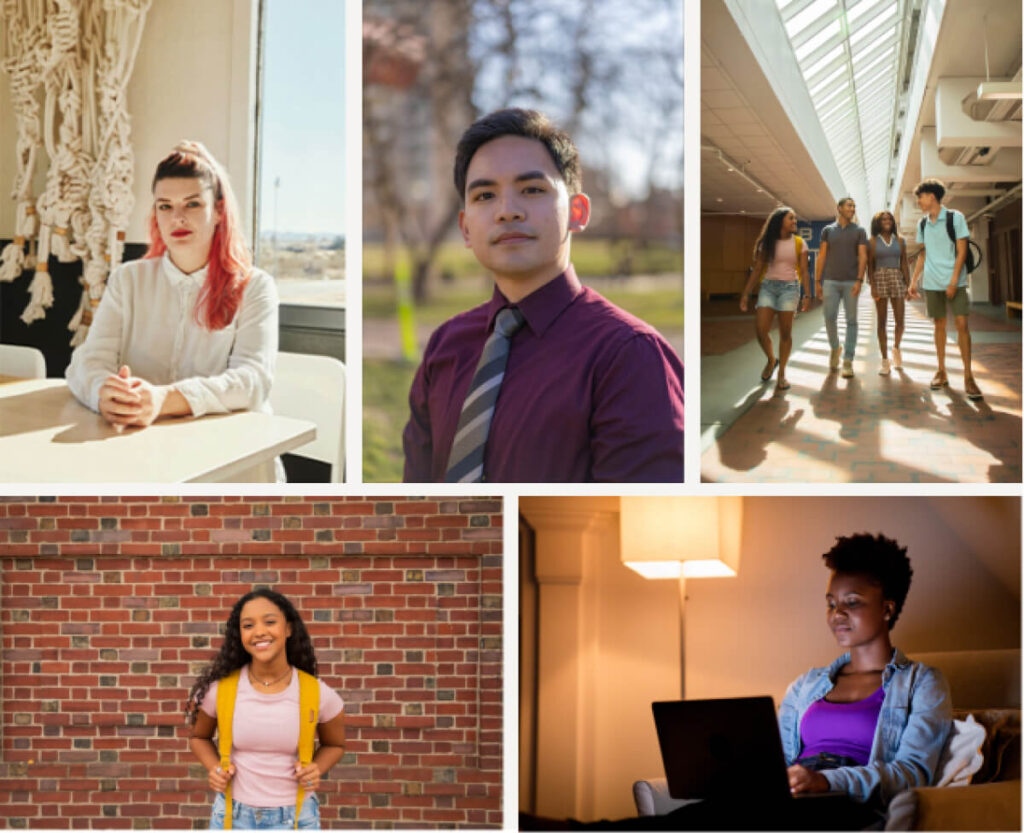
Location and Props
- Showcase Harvard’s essence by featuring individuals in their environment, blending environmental shots with ongoing student portraits.
- Capture the campus’s iconic elements — brick, ivy, and expansive outdoor spaces — to create a cohesive visual narrative.
- Prioritize candid moments that reflect personal experiences like engaged discussions and vibrant learning communities, avoiding staged scenes.
- Allow props and settings to naturally integrate with individuals for an authentic portrayal that resonates with different comfort levels in photography.
- While facing the camera is generally effective, it’s also good to incorporate variety in shots and angles.
- Depending on the content, consider including different perspectives and camera angles to keep the visuals interesting.
- Having the talent face the camera helps establish a direct connection with the audience. It creates a sense of engagement and intimacy, making the viewers feel more connected to the person on screen.
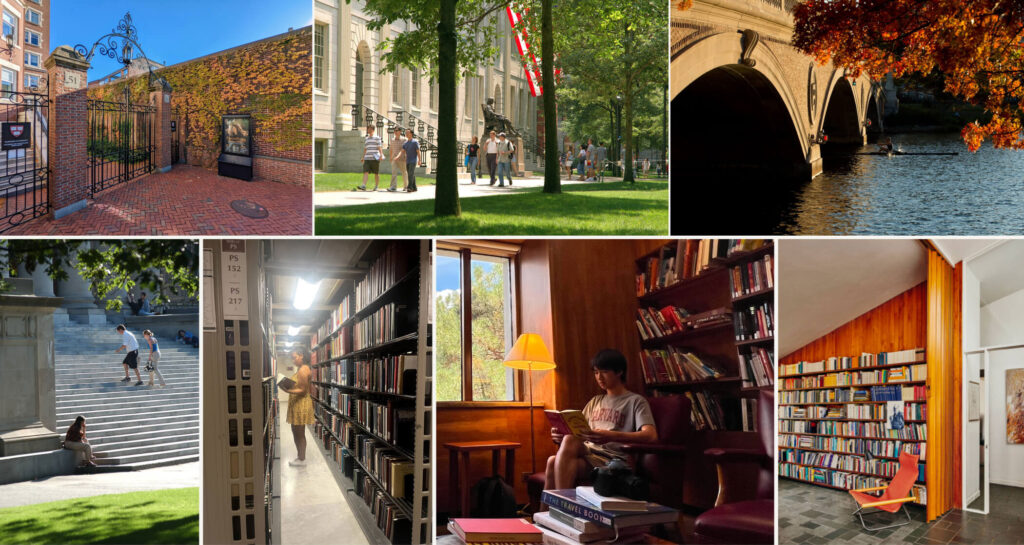
Composition
- Compose shots that seamlessly blend individuals into Harvard’s iconic ambiance, highlighting brick, ivy, and expansive outdoor spaces.
- Use wide angles to capture environments, allowing potential students to envision themselves within.
- Avoid overly empty frames, incorporating one or two individuals to add life without overshadowing the setting.
- Maintain consistency by balancing campus and student portraits for a cohesive narrative.
- Embrace candidness, capturing unique moments within the Harvard environment.
- Provide context in compositions, prioritizing surroundings over generic smiles for richer storytelling.
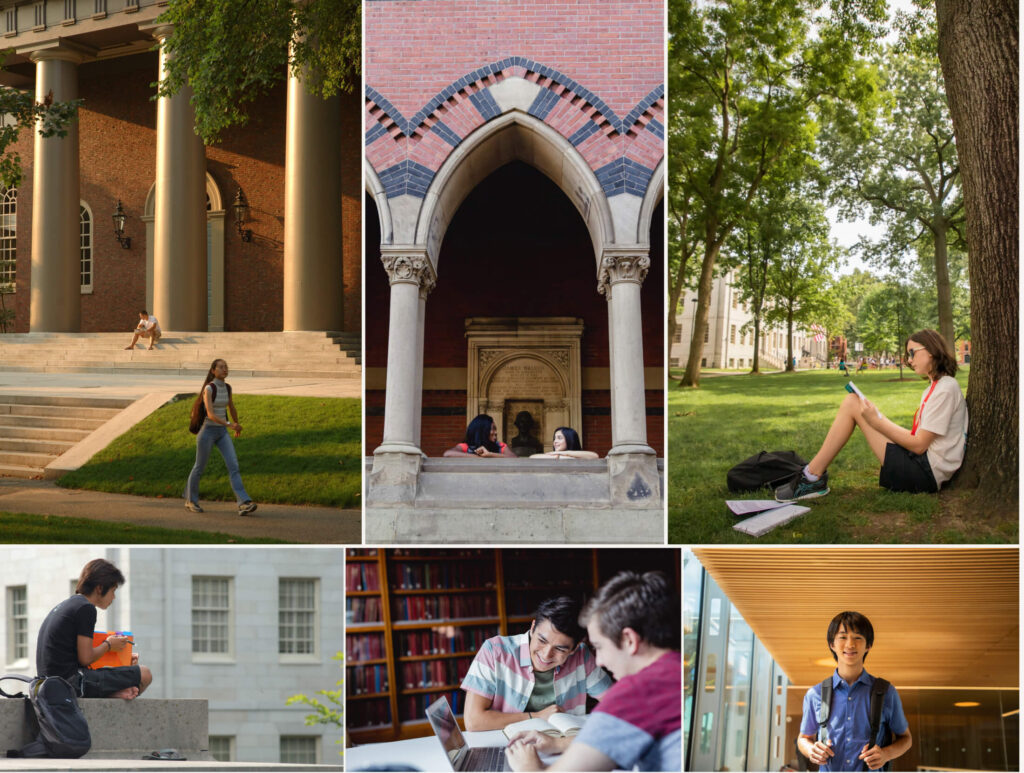
Lighting and Color
- In both portrait and environmental shots, leveraging warm tones and textures not only enhances the visual appeal but also aligns with the elegant and inviting design aesthetic.
- Employing warm lighting schemes adds a sense of depth and coziness to the imagery, fostering a welcoming atmosphere that resonates with viewers.
- Incorporating textured elements within the composition further enriches the visual narrative, lending depth and character to the scenes.
- This emphasis on warm hues and tactile textures not only creates a visually appealing palette but also harmonizes with the overall design ethos, infusing the shots with an inviting and sophisticated ambiance.
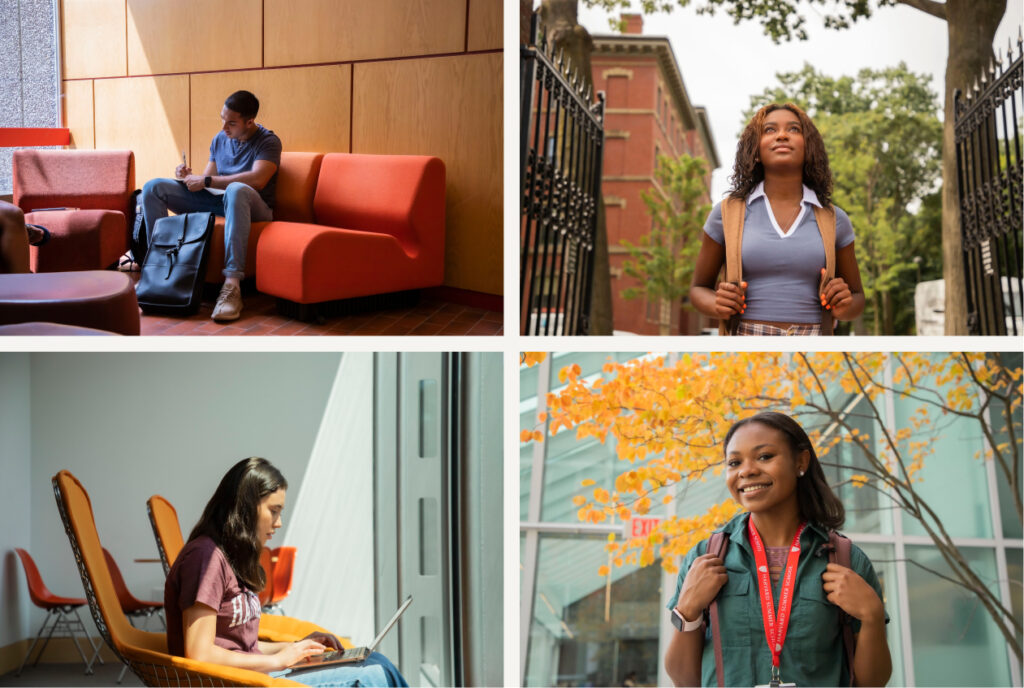
What To Avoid
- Using branded clothing or props.
- Including ID cards or personal identifying information.
- Directing talent into uncomfortable poses.
- Staging interactions that feel overly contrived or artificial to maintain authenticity and naturalness in the shots.
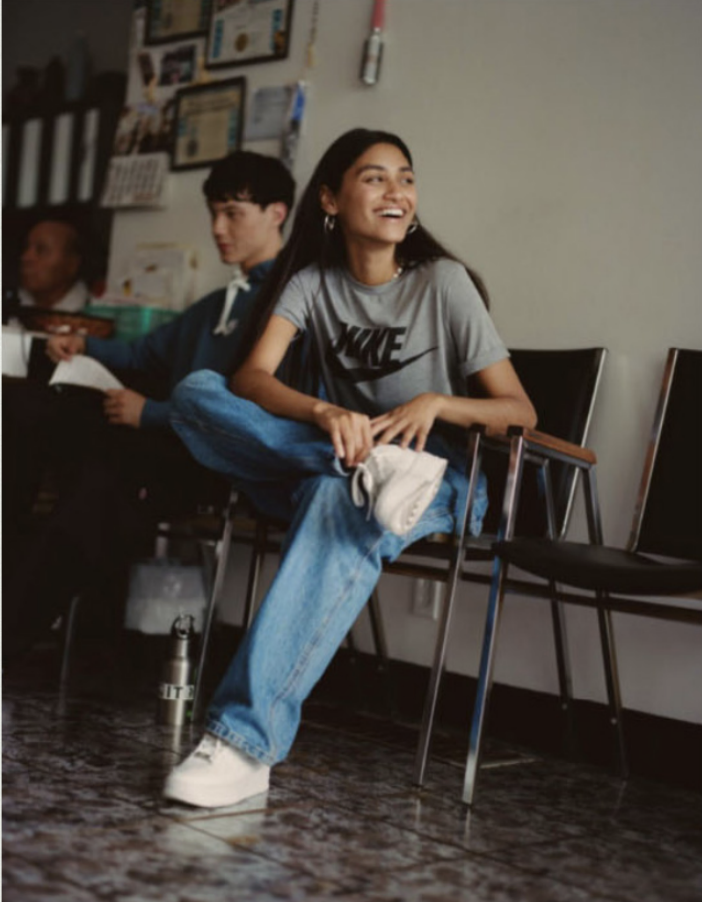 Don’t use branded clothing or props
Don’t use branded clothing or props

Don’t art direct talent into awkward postures
 Don’t create overly staged interactions or use backdrops that feel artificial
Don’t create overly staged interactions or use backdrops that feel artificial